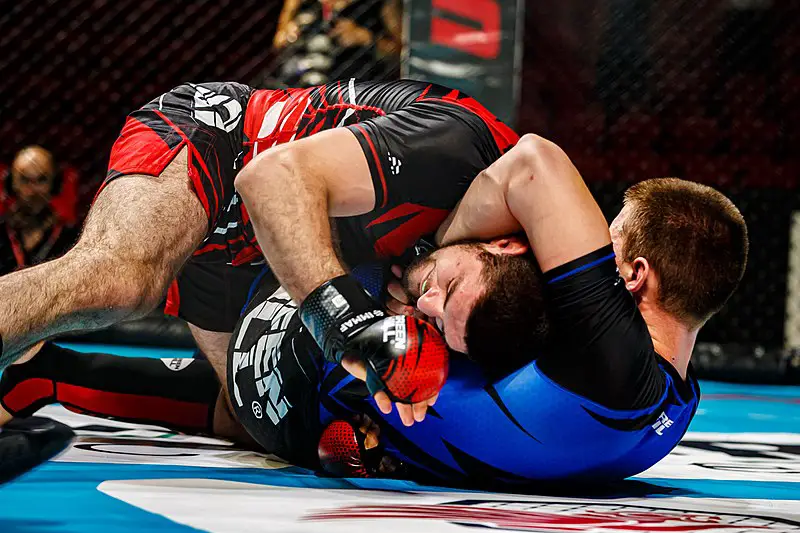Combining boxing and Brazilian Jiu-Jitsu (BJJ) can be a powerful approach to martial arts training. This combo can potentially make you an all-around fighter, and improve your self-defense and combat abilities in general.
Let’s explore how boxing and BJJ complement each other and why they make a formidable pair.
Is Boxing And BJJ a Good Combination?
Yes, boxing and Brazilian Jiu-Jitsu (BJJ) make a great combination. Boxing improves your striking skills, giving you powerful punches and quick footwork. Meanwhile, BJJ enhances your grappling abilities, allowing you to control opponents on the ground.
Together, they create a well-rounded fighting style, making you effective in both stand-up and ground combat.
Can you combine boxing and BJJ?
In general, these are two separate combat systems that emphasize different aspects. While boxing is one of the best striking systems, the same could be said for BJJ. As a result, pairing these two together is, perhaps, the best combo of fighting skills one can have.
It makes you more than capable of dealing with real-life self-defense scenarios. Or, if you want to be a competitive fighter, a very skilled mixed martial artist.
Why Boxing and BJJ is A Good Skill Combo?
This specific combo helps you develop versatile fighting skills, enhanced defensive abilities, and superior physical conditioning.
Comprehensive Combat Skills
Boxing provides superior striking skills, teaching powerful punches, defensive maneuvers, and footwork. BJJ complements this with exceptional grappling, submissions, and ground control. Together, they cover both stand-up and ground fighting scenarios.
This means that you will be capable of fighting at all ranges and in all places. Whether the fight is in the open or closed space, on the feet or on the ground, you will have the tools to defend.
Self-Defense and Practicality
Both boxing and BJJ are highly effective in real-world self-defense situations. Boxing helps in dealing with aggressors standing up, while BJJ is crucial if the fight goes to the ground.
BJJ provides techniques to control and subdue an opponent without causing unnecessary harm, an important aspect in self-defense and law enforcement scenarios.
Accessibility
Both sports are widely practised and have numerous training facilities, making it easier to find quality instruction and sparring partners. On top of that, there are many opportunities for competition both on the regional and international scene.
How To Combine Boxing and BJJ
Start by scheduling separate sessions for each discipline to build a solid foundation. Then, integrate techniques by practicing transitions between striking and grappling.
Build a Strong Foundation
In the best-case scenario start by training in boxing for a year or more. This is because boxing is not as complex and you can develop strong foundation within a year.
Then, you can switch over to fully commit to BJJ and dedicate around 30% of your time to boxing sessions. This way, you can easily balance between the two and methodically improve your skill set.
Integrate Techniques
Once you have a solid grasp of the basics, begin integrating techniques from both disciplines. Practice transitions between striking and grappling. For example:
- Work on defending takedowns while maintaining a strong boxing stance.
- Drill combinations that start with striking and transition to clinches and takedowns.
- Practice escaping from clinches and returning to a striking position.
Mixed Sparring Sessions
Sparring is crucial for applying what you’ve learned in a realistic setting. Engage in mixed sparring sessions where you alternate between boxing and BJJ. This helps you develop the ability to switch seamlessly between standing and ground combat. For instance:
- Start a round with boxing, then transition to grappling mid-round.
- Begin on the ground and work your way up to striking.
- Simulate real fight scenarios by mixing striking and grappling continuously.
Focus on Conditioning
Physical conditioning is essential for excelling in both boxing and BJJ. Incorporate a well-rounded fitness routine that includes:
- Cardio exercises (running, cycling, HIIT) to build endurance.
- Strength training (weightlifting, bodyweight exercises) to enhance power and resilience.
- Flexibility and mobility exercises (yoga, stretching) to prevent injuries and improve performance.
Recovery and Balance
Balancing training volume and intensity is key to avoiding overtraining. Ensure you have adequate rest days and recovery strategies in place. Techniques for effective recovery include:
- Getting enough sleep.
- Using active recovery methods like light jogging or stretching.
- Incorporating rest days to allow your muscles and mind to recuperate.
How Often To Train Boxing And BJJ?
If you’re new to boxing or BJJ, starting with two sessions per week for each discipline is a good approach. This allows your body to adapt to the new demands without risking overtraining.
As you gain experience and your fitness level improves, you can increase your training frequency to three times per week. Be careful and listen to your body. Going from two to three sessions a week for both arts is a big step up.
For intermediate BJJ practitioners, training three to four times per week provides ample opportunity to deepen your understanding of techniques and increase your mat time for rolling.
This level of frequency helps you to become more comfortable in live sparring situations and start developing your personal style and strategy on the mat.
Some practitioners prefer to completely split their training time. One week, they would focus solely on boxing and then the next week attend BJJ classes. Both approaches are fine and you should choose whatever fits your schedule.
Is Boxing and BJJ Good For MMA?
Yes, boxing and BJJ are a great combination for MMA but not the one without the flaws. Their integration provides a solid foundation in both striking and grappling, making fighters versatile and capable of adapting to various opponents and situations in the cage.
But despite the versatile skillset, MMA fighters still need to work on improving their wrestling, clinch game and kicking techniques.
Training in both disciplines requires a well-structured regimen that balances striking and grappling. Incorporating other aspects of MMA, such as wrestling for takedown defense and Muay Thai for kicks and clinch work, further enhances a fighter’s versatility and effectiveness.
Boxing vs BJJ — Who Would Win?
In a straight-up boxing match, the boxer would likely win due to their superior striking skills. In a BJJ match, the BJJ practitioner would win because of their dominance in grappling and submissions. In an MMA or no-rules fight, the outcome would depend on who can impose their strengths while minimizing their weaknesses.
If the boxer can keep the fight standing and use their striking skills, they have a good chance of winning. The boxer needs to avoid being taken down and use their footwork to maintain distance.
However, this is easier said than done. Striking is far more natural than grappling so jiu jitsu fighters enjoy a much bigger advantage. In other words, it is easier for a grappler to avoid a strike than for a striker to prevent a takedown.
If the BJJ practitioner can close the distance, take the boxer down, and bring the fight to the ground, they are likely to win. On the ground, the BJJ practitioner’s grappling and submission skills would be overwhelming for the boxer.
Final Thoughts on Boxing and BJJ
Boxing and Brazilian Jiu-Jitsu (BJJ) both offer unique strengths in the realm of combat sports. If you have enough time and energy to sustain training in two martial arts, then this might be an ideal combo for you.


